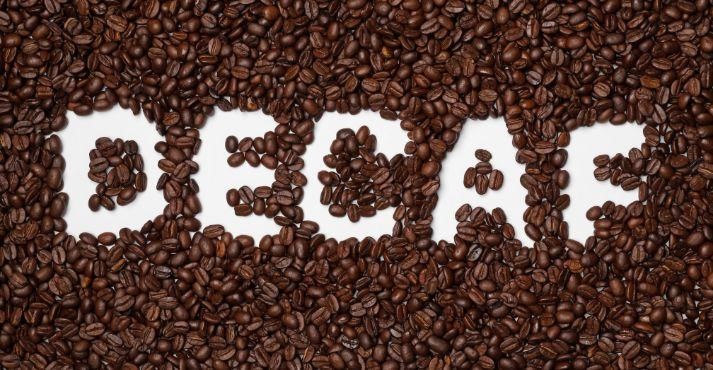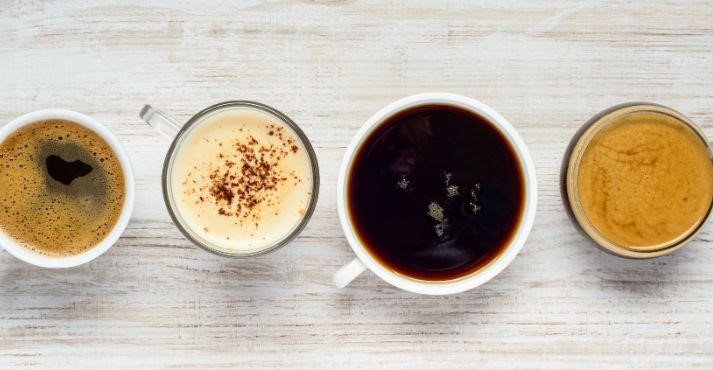Decaf coffee, short for decaffeinated coffee, has witnessed a steady rise in popularity in recent years. According to a study, the decaf coffee market is projected to grow by 5%-7% annually in the next decade, reflecting a growing trend toward this low-caffeine alternative.
With more individuals going for decaf to enjoy the taste of coffee without the stimulating effects of caffeine, its appeal continues to expand, and more and more individuals want to know about decaf coffee.
Decaf coffee is processed to remove most of the caffeine while retaining the flavor compounds, offering a perfect solution for those seeking a milder coffee experience.
Besides catering to caffeine-sensitive individuals, decaf coffee may also provide potential health benefits associated with moderate coffee consumption.
From reducing the risk of certain health conditions to providing a satisfying beverage choice for any time of day, decaf coffee has become a beloved option for coffee enthusiasts worldwide.
In this article, we’ll explore decaf coffee, how it’s made, its health benefits, and tips for brewing the perfect cup.
What is Decaf Coffee?
Decaf coffee, also called decaffeinated coffee, is a variant made from regular coffee beans subjected to a process that extracts much caffeine. Though not entirely caffeine-free, decaf coffee contains substantially less caffeine than its caffeinated counterparts and other drinks.
Despite this reduction, decaf coffee maintains the distinctive rich flavor and aroma associated with coffee.
This process typically involves steaming green coffee beans to open their pores and rinsing them with a solvent like ethyl acetate or water to dissolve and remove the caffeine. The beans are then dried and roasted as usual.
The result is a beverage that allows individuals to enjoy the taste of coffee without the stimulating effects of caffeine. This makes it a popular choice for those who want to limit their caffeine intake, enjoy it later in the day as a daily coffee ritual, or simply prefer a milder option.
How is Decaf Coffee Made?

Decaf coffee undergoes a thorough decaffeination process to remove the caffeine from the beans while preserving their flavor. Hence, decaf coffee tastes nearly identical to regular coffee.
Several methods are used to decaffeinate coffee beans, including solvent-based, water, and carbon dioxide methods.
1. Solvent-based Method:
The steps involved in the decaffeination of beans through solvent-based methods are given below:
- First, green coffee beans are steamed to open their pores; robusta coffee beans are preferred.
- Then, they are rinsed with a solvent like ethyl acetate or methylene chloride to dissolve and remove the caffeine.
- Finally, the beans are dried and roasted as usual.
Pros:
- Effective at removing caffeine.
- Relatively inexpensive.
Cons:
- Some solvents may leave behind trace amounts, impacting flavor.
- Environmental and health concerns associated with certain solvents.
2. Water Process:
This decaf coffee preparation method uses water to extract caffeine from green coffee beans, preferably single-origin coffee. The main steps are:
- The beans are soaked in water, allowing the caffeine to dissolve.
- The caffeine-rich water is then passed through activated charcoal filters to remove the caffeine.
- The beans are re-soaked in the now-decaffeinated water, reabsorbing flavor compounds.
Pros:
- No chemicals are involved.
- Retains more of the original flavor.
Cons:
- More time-consuming and expensive.
- It may remove some flavor compounds along with caffeine.
3. Carbon Dioxide Method:
The steps involved in the carbon dioxide method for decaffeination are:
- As usual, first, the green coffee beans are soaked in water to soften them.
- They are then placed in a stainless steel container and pressurized with carbon dioxide.
- Carbon dioxide acts as a solvent, extracting caffeine.
- The caffeine-rich carbon dioxide is then filtered to remove the caffeine.
Pros:
- No chemical residues.
- Preserves flavor well.
Cons:
- Expensive beverage service equipment is required.
- It can be energy-intensive.
Health Benefits of Decaf Coffee
Decaf coffee, despite its reduced decaf caffeine content, still provides several potential health benefits, similar to regular coffee. Studies suggest that the antioxidants found in coffee contribute to these health benefits, regardless of caffeine content.
- Reduced Risk of Heart Disease: Research indicates that decaf coffee consumption may be associated with a lower risk of heart disease thanks to its antioxidant properties.
- Improved Sleep: Unlike caffeinated beverages, decaf coffee can be enjoyed without disrupting sleep patterns, making it a suitable choice for evening consumption.
- Antioxidant Content: Decaf coffee contains antioxidants that contribute to overall health and well-being, potentially reducing inflammation and oxidative stress.
- Lowered Risk of Certain Health Conditions: Some studies suggest that decaf coffee consumption may be linked to a decreased risk of certain health conditions, such as type 2 diabetes and certain types of cancer.
- Brain Health: Antioxidants in decaf coffee may also have neuroprotective effects, potentially reducing the risk of neurodegenerative diseases like Alzheimer’s and Parkinson’s.
- Digestive Health: Decaf coffee may help promote digestive health by stimulating gastric acid production and aiding digestion.
- Hydration: Decaf coffee can contribute to daily fluid intake, aiding in hydration without the diuretic effects of caffeine.
Types of Decaf Coffee

Decaf coffee is available in various varieties and blends to suit different preferences. Popular options include decaf espresso, decaf Colombian, and decaf blends. Each variety of coffee offers its unique flavor profile while maintaining a decaf coffee taste, allowing coffee enthusiasts to enjoy their favorite brew without the caffeine.
Decaf Espresso:
Decaf espresso is a popular choice for those who love traditional espresso’s intense flavor and robust aroma but prefer to limit their caffeine intake. It retains espresso’s rich, full-bodied character while offering a smoother, milder experience.
Decaf Colombian:
Colombian coffee is renowned for its balanced flavor, mild acidity, and sweet undertones. Decaf Colombian coffee retains these characteristics, allowing drinkers to enjoy the smooth, rich taste without the stimulating effects of caffeine, which is the primary purpose of decaf coffee.
Decaf Blends:
Decaf blends combine beans from different regions and with varying flavor profiles to create a balanced and complex cup of coffee.
These blends may include beans from South America, Africa, and other coffee-producing regions, resulting in a multi-dimensional and satisfying flavor profile that appeals to a wide range of palates.
Decaf Flavored Coffee:
For those who enjoy flavored coffee, decaf options are available in various flavors, such as vanilla, hazelnut, caramel, and more. These flavored decaf coffees offer a delightful twist on traditional blends, providing a sweet and aromatic experience without the caffeine.
Organic Decaf Coffee:
Organic decaf coffee is made from beans that are grown without the use of synthetic pesticides or fertilizers. These beans are processed using natural methods, ensuring a clean and chemical-free cup of coffee that is both environmentally friendly and delicious.
Decaf Coffee vs. Regular Coffee

Decaffeinated coffee differs from regular coffee primarily in its caffeine content. While regular coffee boosts caffeine, decaf coffee offers a milder alternative without sacrificing flavor.
Taste preferences vary, with some individuals enjoying the boldness of regular coffee while others prefer the smoothness of decaf coffee taste.
1. Caffeine Content:
The most significant difference between decaf coffee and regular coffee lies in their caffeine content. Regular coffee contains caffeine, a natural stimulant for increasing alertness and energy levels.
In contrast, decaf coffee undergoes a process to remove the majority of caffeine, offering a milder alternative for those who prefer to limit their caffeine intake or avoid its stimulating effects.
2. Flavor Profile:
Despite the variance in caffeine content, decaf and regular coffee maintain their characteristic flavor profiles. Regular coffee often boasts a bold and robust taste, with varying levels of acidity and bitterness depending on factors such as bean type, roast level, and brewing method.
Conversely, decaf coffee delivers a similarly rich and flavorful experience but with a smoother finish and less pronounced caffeine kick.
3. Preference and Lifestyle:
Taste preferences play a significant role in determining whether one goes for decaf or regular coffee. Some enjoy regular coffee’s refreshing feeling, bold flavors, and stimulating effects. In contrast, others prefer the gentler, more subtle taste of decaf coffee, appreciating its ability to offer a satisfying coffee experience without the caffeine buzz.
Tips for Brewing Decaf Coffee
Brewing decaf coffee requires attention to detail to ensure optimal flavor extraction. Factors such as grind size, water temperature, and brewing method play a crucial role in brewing the perfect cup.
Experimenting with different variables can help coffee enthusiasts discover their preferred brewing technique for decaf coffee.
Brewing decaffeinated coffee to perfection involves considering several key factors:
1. Grind Size:
Choose a medium grind size to ensure even extraction and balanced flavor.
2. Water Temperature:
Use water between 195- 205 degrees Fahrenheit (90 degrees Celsius to 96 degrees Celsius) for optimal extraction without scalding the coffee.
3. Brewing Method:
Experiment with various brewing methods such as pour-over, French press, or drip coffee maker to find the one that best suits your taste preferences.
4. Coffee-to-Water Ratio:
To achieve a well-balanced brew, maintain a consistent coffee-to-water ratio, typically around 1 to 2 tablespoons per 6 ounces of water.
5. Freshness of Beans:
Use freshly ground decaf coffee beans for the best flavor and aroma, as stale beans can result in a dull and flat-tasting brew.
6. Brewing Time:
Adjust the brewing time according to your preferred strength of coffee, ensuring that it does not over-extract and impart bitterness to the brew.
7. Pre-wetting the Coffee Grounds:
Pre-wet the coffee grounds with a small amount of hot water before brewing to allow them to bloom and release trapped gases for a more flavorful cup.
8. Water Quality:
Use filtered water to brew decaf coffee, as tap water impurities can affect the final brew’s taste and clarity.
9. Clean Equipment:
Regularly clean your brewing equipment, including the coffee maker, grinder, and filters, to prevent the buildup of oils and residues that can impact the flavor of your coffee.
10. Patience and Practice:
Brewing the perfect cup of decaf coffee may require patience and practice, so feel free to experiment with different techniques and adjustments until you find your ideal brew.
Decaf Coffee (FAQs)
Is decaf coffee any healthier?
Decaf coffee may offer similar health benefits to regular coffee, such as antioxidants that can help reduce the risk of certain health conditions. However, it’s essential to note that individual health outcomes may vary based on factors like diet and lifestyle.
Does decaf coffee make you sleepy?
Decaf coffee typically contains trace amounts of caffeine, which are unlikely to cause drowsiness. However, individual responses to caffeine can vary, so some people may still experience mild effects such as increased alertness.
Is decaf coffee more bitter than regular?
Decaf coffee can sometimes have a slightly different flavor profile than regular coffee. Still, bitterness levels depend on roast level and brewing method rather than caffeine content alone. With proper brewing techniques, decaf coffee can be just as smooth and enjoyable as its caffeinated counterpart.
Conclusion
In conclusion, decaf coffee offers a delightful alternative for those seeking the taste of coffee without the caffeine buzz. But what is decaf coffee? It’s a flavorful beverage made from coffee beans that has undergone a process to remove most of the caffeine.
Whether you’re looking to reduce your caffeine intake or enjoy a cup of coffee any time of day, decaf coffee provides a flavorful solution. With various decaffeination methods and a wide range of decaf coffee varieties available, there’s something for every coffee enthusiast to enjoy.
So, the next time you crave a comforting cup of coffee without the jolt of caffeine, reach for a delicious cup of decaf and savor every sip.








